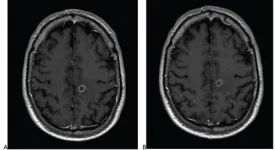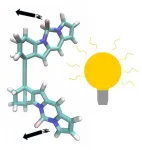(Press-News.org) In a bid to find or refine laboratory research models for cancer that better compare with what happens in living people, Johns Hopkins Medicine scientists report they have developed a new computer-based technique showing that human cancer cells grown in culture dishes are the least genetically similar to their human sources.
The finding, they say, should help focus more resources on cancer research models such as genetically engineered mice and 3D balls of human tissue known as "tumoroids" to better evaluate human cancer biology and treatments, and the genetic errors responsible for cancer growth and progress.
"It may not be a surprise to scientists that cancer cell lines are genetically inferior to other models, but we were surprised that genetically engineered mice and tumoroids performed so very well by comparison," says Patrick Cahan, Ph.D., associate professor of biomedical engineering at The Johns Hopkins University and the Johns Hopkins University School of Medicine and lead investigator of the new study.
The new technique, dubbed CancerCellNet, uses computer models to compare the RNA sequences of a research model with data from a cancer genome atlas to compare how closely the two sets match up.
The researchers found that, on average, genetically engineered mice and tumoroids have RNA sequences most closely aligned with the genome atlas baseline data in 4 out of every 5 tumor types they tested, including breast, lung and ovarian cancers.
The investigators say their work adds to evidence that cancer cell lines grown in the laboratory have less parity with their human source because of the complex differences between a human cell's natural environment and a laboratory growth environment. "Once you take tumors out of their natural environment, cell lines start to change," says Cahan.
Scientists worldwide rely on a range of research models to improve their understanding of cancer and other disease biology and develop treatments for conditions. Among the most widely used cancer research models are cell lines created by extracting cells from human tumors and growing them with various nutrients in laboratory flasks.
Researchers also use mice that have been genetically engineered to develop cancer. In other cases, they implant human tumors into mice, a process called xenografting, or use tumoroids.
To evaluate how well any of these research models align with what may be happening in people, scientists often transplant lab-cultured cells or cells from tumoroids or xenografts into mice and see if the cells behave as they should -- that is, grow and spread and retain the genetic hallmarks of cancer. However, the Johns Hopkins researchers say this process is expensive, time-consuming and scientifically challenging.
The goal of the new work was to develop a computational approach to evaluating research models in a less cumbersome and accurate way. A report on the work was published April 29 in Genome Medicine, and the researchers have filed for a provisional patent on what they named CancerCellNet.
The new technique is based on genetic information about cellular RNA, a molecular string of chemicals similar to DNA and an intermediate set of instructions cells used to translate DNA into the manufacture of proteins.
"RNA is a pretty good surrogate for cell type and cell identity, which are key to determining whether lab-developed cells resemble their human counterparts," says Cahan. "RNA expression data is very standardized and available to researchers, and less subject to technical variation that can confound a study's results."
First, Cahan and his team had to choose a standard set of data that acted as a baseline to compare the research models. Data from The Cancer Genome Atlas served as the so-called "training" data, which includes RNA expression information of hundreds of patient tumor samples, and their corresponding stage, grade and other tumor information.
They also tested their CancerCellNet tool by applying it to data where the tumor type was already known, such as from the International Human Genome Sequencing Consortium.
Members of the research team combed through The Cancer Genome Atlas data to determine 22 types of tumors to study. They used the genome atlas data as the baseline for comparing RNA expression data from 657 cancer cell lines grown in labs worldwide, some of which were established decades ago, 415 xenografts, 26 genetically engineered mouse models and 131 tumoroids.
In one example from the study, prostate cancer cells from a line called PC3 start to look genetically more like bladder cancer, he notes. It's also possible, he says, that the cell line was originally labeled incorrectly or it could have actually been derived from bladder cancer. But the bottom line was that from a genetic standpoint, the prostate cancer cell line was not a representative surrogate for what happens in a typical human with prostate cancer.
The investigators found that, using a 0-1 scoring method, cell lines had, on average, lower scoring alignment to atlas data than tumoroids and xenografts.
Cahan says he and his team will be adding additional RNA sequencing data to improve the reliability of CancerCellNet.
INFORMATION:
Funding for the research was provided by the National Institutes of Health's National Cancer Institute (P50CA228991, CA233255-01, CA214253), a Prostate Cancer Foundation Young Investigator Award, the Department of Defense (W81XWH-17-PCRP-HD), and the National Institutes of Health/National Cancer Institute (P20 CA233255-01, CA214253).
Other scientists who conducted the research include Da Peng, Rachel Gleyzer, Wen-Hsin Tai , Pavithra Kumar, Qin Bian, Bradley Isaacs, Stephanie Cai and Kathleen DiNapoli from Johns Hopkins; Edroaldo Lummertz da Rocha from Federal University of Santa Catarina in Brazil; and Franklin Huang from the University of California, San Francisco.
An algorithm designed by researchers from Carnegie Mellon University's Computational Biology Department and St. Petersburg State University in Russia could help scientists identify unknown molecules. The algorithm, called MolDiscovery, uses mass spectrometry data from molecules to predict the identity of unknown substances, telling scientists early in their research whether they have stumbled on something new or merely rediscovered something already known.
This development could save time and money in the search for new naturally occurring products that could be used in medicine.
"Scientists waste a lot of time isolating molecules that are already known, essentially rediscovering penicillin," said Hosein Mohimani, an assistant ...
Leesburg, VA, June 17, 2021--According to ARRS' American Journal of Roentgenology (AJR), a reduced dose of gadobutrol is non-inferior to 100%-standard dose of gadoterate for contrast-enhanced brain MRI.
"A 25% reduced gadobutrol dose demonstrated non-inferior efficacy versus standard dose gadoterate for contrast-enhanced brain MRI," corresponding author Jan Endrikat of Germany's University Medical School of Saarland elaborated, "warranting particular consideration in patients undergoing multiple contrast-enhanced examinations."
In this international, prospective, multicenter, open-label, crossover trial (LEADER-75), 141 patients (78 men, 63 women; mean age, 58.5 years) with known or suspected CNS pathology ...
Type 1 diabetes is a disorder in which the immune system inappropriately targets a class of cells in the pancreas known as β cells that produce the hormone insulin, which plays an important role in regulating bloodstream glucose levels and the metabolism of carbohydrates, lipids, and proteins. The loss of insulin causes a range of health problems for people with type 1 diabetes, and patients become dependent on insulin injections for their survival. Even with insulin therapy, people with type 1 diabetes have shortened lifespans and are at an elevated risk of developing myriad complications.
Previous studies have identified numerous genetic risk factors for type 1 diabetes. One notable finding is the importance of the HLA region, a part of the human ...
New technologies allow users to do things like race their real bikes against other real people in a virtual world, and a new study outlines what motivates people to use these online platforms. The findings offer insights for future iterations of these technologies - and how to market them.
At issue are "mixed-reality sports": augmented reality platforms that incorporate virtual, online elements and real-world athletic endeavors. For example, Zwift is a platform that allows users to ride their real bicycles, but transfers their efforts to a virtual space depicting real-world courses - allowing them to race against other cyclists who are not physically present.
"We ...
Medical guidelines help doctors understand the best way to treat health conditions. Surprisingly, many doctors do not adhere to them, and this is a problem, according to a new study by scientists at University of Utah Health and MDGuidelines. People with lower back pain injury miss 11 more days of work in a year when they only receive treatments for lower back pain that are not recommended by medical guidelines compared to people treated according to guidelines. The findings publish in END ...
Light-driven molecular motors have been around for over twenty years. These motors typically take microseconds to nanoseconds for one revolution. Thomas Jansen, associate professor of physics at the University of Groningen, and Master's student Atreya Majumdar have now designed an even faster molecular motor. The new design is driven by light only and can make a full turn in picoseconds, using the power of a single photon. Jansen: 'We have developed a new out-of-the-box design for a motor molecule that is much faster.' The design was published in The Journal of Physical Chemistry ...
When astronomers using NASA's Hubble Space Telescope uncovered an oddball galaxy that looked like it didn't have much dark matter, some thought the finding was hard to believe and looked for a simpler explanation.
Dark matter, after all, is the invisible glue that makes up the bulk of the universe's matter. All galaxies appear to be dominated by it; in fact, galaxies are thought to form inside immense halos of dark matter.
So, finding a galaxy lacking the invisible stuff is an extraordinary claim that challenges conventional wisdom. It would have the potential to upset theories of galaxy formation and evolution.
To bolster their original finding, first reported in 2018 ...
The intestinal disease necrotizing enterocolitis is a leading cause of death among premature infants born in the U.S. and across the globe. Characterized by excessive inflammation that can cause tissue decay in the bowels, the disease provides a pathway for infectious and deadly bacteria to enter the bloodstream.
Despite four decades of research, effective treatments remain elusive, and mortality rates in babies who develop the disease have remained essentially unchanged, hovering at about 30%.
Now, a study led by researchers at Washington University ...
Personalised coaching through a smartphone platform can help women improve their lifestyle behaviours in the period before and shortly after they become pregnant, a new study has shown. The biggest reduction in behaviours that pose risks to pregnancy were seen in overweight women.
The findings, published in the journal Reproductive Biomedicine Online, show that digital healthcare could be a cost-effective way to deliver tailored advice to women who experience difficulties in pregnancy, which the NHS does not have the resources to provide.
In this study, led by the University of Southampton, 262 women who were planning pregnancies and had either experienced difficulties in conceiving or recurrent miscarriages signed ...
June 17, 2021 - Nutley, NJ - Tiny genetic markers, circulating in the blood, have shown great promise in diagnosing and treating disease. Yet identifying and harvesting these extracellular vesicles (EVs) have been a major challenge for science.
Now a laboratory at the Hackensack Meridian Center for Discovery and Innovation (CDI) has discovered a highly sensitive methodology that can efficiently find and harness EVs - particularly exosomes and the micro RNAs they carry. These could be crucial clues to identifying diseases such as cancer early on in its development.
The scientists have now unveiled the Extracellular Vesicle Capture by AnTibody of CHoice and 1 Enzymatic Release, or EV-CATCHER, in the Journal of Extracellular Vesicles.
"We are establishing the threshold ...



